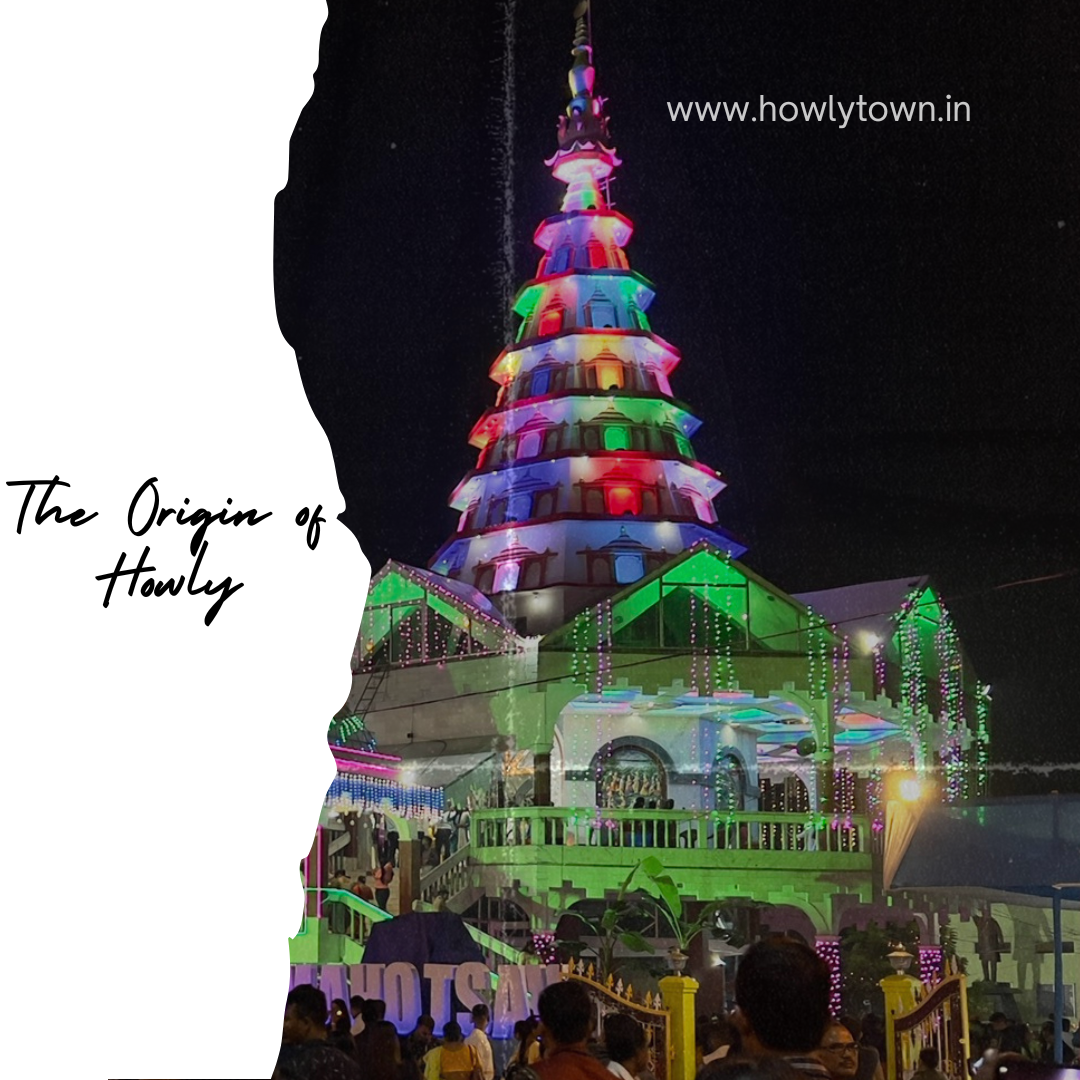.png?ts=1761969232)
howlytown.in
How did the name ‘Howly’ come into existence?
▶The name Howly is not rooted in ancient times, though it bears echoes of history. Earlier records do not mention Howly itself, but rather refer to a term used in royal and noble circles—Raajhowly. This word was closely associated with the esteemed nobleman Roja Chandi Baruah, and over time, as language and memory evolved, Raajhowly gradually transformed into the simpler, more familiar Howly.
▶In the year 1563, Roja Naranarayan of the Koch kingdom, after successfully conquering parts of the Ahom territory, returned from Garhgaon and its capital with not just victory but vision. With him came groups of skilled artisans—metalworkers, potters, goldsmiths, weavers, and others whose hands shaped the culture of the time. He settled these craftsmen across four newly founded towns in the Kamrup region: Barnagar, Nabanagar, Bhawanipur, and Kaljhar.
▶It is believed that in Nabanagar, Chandi Baruah established the Raajhowly—a noble residence or administrative seat—which eventually became the heart of Barnagar. With time, Nabanagar, the town built by Roja Naranarayan, came to be known as Howly—a transformation shaped by years of usage and local memory.
▶Interestingly, in the religious and cultural histories of the Sankari era, as well as in the official records of Roja Naranarayan’s reign, there is no mention of Howly. The names that do appear in historical texts include Ghilaanagar, Bijoynagar, Barnagar, Kaljhar, Bhawanipur, Nabanagar, Yugirpam, and Sathijana, among others—but Howly remains absent from these early listings.
▶However, by the late 19th century, the name Howly begins to surface in literature. In the novel Manomoti, written by Rajanikanta Bordoloi before the devastating 1897 earthquake, Howly is mentioned alongside places such as Holapakuri, Yugirpam, Nagarjhar, Baruahbari, Ghilajhar, and Barbarijhar—a testament to the growing importance of the region in popular imagination.
The Birth of a Name Amidst the Ashes
▶Following the widespread destruction of Chandi Baruah’s estate—and indeed much of the surrounding region—a long, difficult era settled over Howly. The period between 1823 and the great earthquake of 1897 is often referred to by historians as the "Dark Age" of Howly. During this time of loss and transformation, it is believed that the name Howly took root, emerging quietly from the ruins of the past and finding a place in the living memory of the land.

The name Howly is not, contrary to casual assumption, a recent invention. Though one does not find frequent references to the name in ancient chronicles, scholars believe that the term Howly evolved from a more regal predecessor—Raajhowly—over the course of time. The etymological lineage is often traced back to the legendary Koch nobleman Chandi Baruah, whose estate was reputedly known as Raajhowly, a term denoting “royal residence.” As language and local dialects evolved, Raajhowly was gradually abbreviated and softened into Howly.
In the year 1563 CE, Koch Roja Naranarayan, having triumphed over parts of the Ahom kingdom, returned from Garhgaon and established four prominent towns—Baranagar, Navanagar, Bhawani Pur, and Kaljhar—in Kamrup, settling there with artisans, potters, goldsmiths, weavers, and other skilled communities. It is believed that Navanagar, one of these towns, may have been the location where Chandi Baruah first established his Raajhowly. Over time, this locale transformed both in function and in nomenclature, emerging as the modern town of Howly.
Interestingly, historical texts from the Sankari Era, including those chronicling the reign of Naranarayan, do not explicitly mention Howly by name. Rather, we find records of towns such as Ghilajari, Bijaynagar, Baranagar, Kaljhar, Bhawanipur, Navanagar, Yugirpam, and Sathijana—suggesting that Howly, or at least the word itself, may have been absent from official documentation during that era.
Nonetheless, literary evidence begins to surface by the late 19th century. In Rajanikanta Bordoloi’s novel Monomoti, written before the catastrophic earthquake of 1897, the name Howly appears alongside various nearby localities such as Halapakuri, Yugirpam, Nagorjhar, Baruwar Bari, Ghilajari, and Borborijhar—offering early confirmation of Howly’s presence in the regional imagination.
The Settlements Before the Great Earthquake
Despite the absence of extensive records, it is certain that Howly and its neighboring areas were home to thriving settlements well before 1897. Literary and historical clues—including the aforementioned Monomoti—paint a picture of a bustling, culturally rich region. Religious institutions like the Kaljhar Satra, Parabhanga Satra, and Ghilajari Satra—originally built before the earthquake—were later relocated due to the tremor’s devastation. These movements strongly imply pre-existing habitation that was both structured and sacred.
One of the most telling pieces of historical evidence is the founding of the Howly Gaon Sabha in 1881, clearly marking the existence of civic life in the town prior to the earthquake. Further, after the Treaty of Yandaboo in 1826, the British extended their administrative reach into Assam. It was during this period that the Northern Sadar Ali road was constructed, passing through Howly from Jaypur. By 1840, a dak bungalow had been erected in Halapakuri Gaon, further suggesting Howly’s emerging importance in colonial infrastructure.
These details support the notion that areas like Ghilajari, Nagorjhar, Halapakuri, and Borborijhar were not only populated but also part of a well-connected network of Assamese rural settlements during the early 19th century.
However, the town’s history is not without its scars. In 1822, during the Burmese invasion, much of the ancient Howly was ravaged and reduced to ruin. A long, opaque chapter—often referred to by historians as the “Dark Era” of Howly—followed. It wasn’t until decades later that the region began to reassert itself.
The 1897 earthquake, paradoxically, proved to be a turning point. Rather than being a full stop, it marked a rebirth. The region entered a new phase of sociocultural development. Numerous nearby hamlets—such as Moiramara, Dhalagaon, Madulijhar, Majorgaon, and Jaljali—began to flourish. At the same time, newer settlements like Dhakaliyapara, Bagaijanpara, Kumullipara, Baniyarapara, Dabaliyapara, Khandakarpara, Hajipara, Phulkipara, and Yasihatipara sprang up—forming the backbone of what would become modern Howly.